Introduction
When Endgame Gear dropped the XM1 just a couple of months ago it was met with general praise from most users, including our very own mouse reviewer (see that review here) but most people did agree that some improvements to things such as the cable could really lift the mouse up to be a great mouse rather than ‘just’ a really good one.
Endgame Gear has now shown that they’re not the type of company to sit on their laurels when they hear these kinds of things, and when we were asked if we wanted to take a look at the new and improved XM1 we just had to agree. Our reviewer has been able to spend some time with it and has come up with the full verdict. Read all about it below!
At a Glance
Endgame Gear XM1 v2
The XM1 v1 was, as I called it, ‘a really promising first attempt’ with a lot of potential. That potential has now been fully realized with the v2, so it’s a logical Staff’s Choice award winner.
This is a solidly constructed lightweight mouse that offers great clicks all over, a more than decent scroll wheel, great feet, and just about the most flexible stock cable that I’ve seen on a mouse so far. Pretty much everything that I had a problem with on the earlier version has been (drastically) improved, and it’s encouraging to see that the people at Endgame Gear have done it on such short notice too.❞
Pros
- Solid build quality
- Great clicks
- Great feet
- Nice shape
- Fantastic cable
Cons
- Scroll wheel could be a bit larger
Specs
| Sensor | PMW 3389 |
|---|---|
| Polling Rate | 125 / 500 / 1000 Hz |
| Button Switches | Omron |
| Button Force | 81.9g |
| Connection | Wired |
| Shape | Ambidextrous |
| Length | 12.14cm |
| Height | 3.80cm |
| Weight | 69g |
| Width | 5.71cm |
Endgame Gear XM1 v2 – First Impressions
Let me first clarify a couple of things, since I know people will be curious: the Endgame Gear XM1 v2 is now the ‘official’ XM1, meaning that it replaces the older XM1 completely. Some retailers still have some stock of the old version, but Endgame Gear is only producing these newer editions at this point.
Because there’s no real new name or packaging for this upgraded version it can be quite hard to tell whether you’ve got a new one or an old one if you cannot physically open the box to check on the cable, so if you’re unsure: all white XM1s are the v2, and v2 XM1s in black have a sticker saying ‘new: flexcord’ on the front, as well as ‘High-quality Flexcord’ written on the spec sheet at the back.
With that out of the way we can move on to my first impressions, and just like with the first version there’s not a lot to see here except for the fact that the mouse is obviously white. The XM1 really tries to be a no-nonsense gaming mouse for the competitive gamers out there, and it does a good job at being just that. Some people just don’t need or want RGB or flashy logos, and the people at Endgame Gear have understood that.
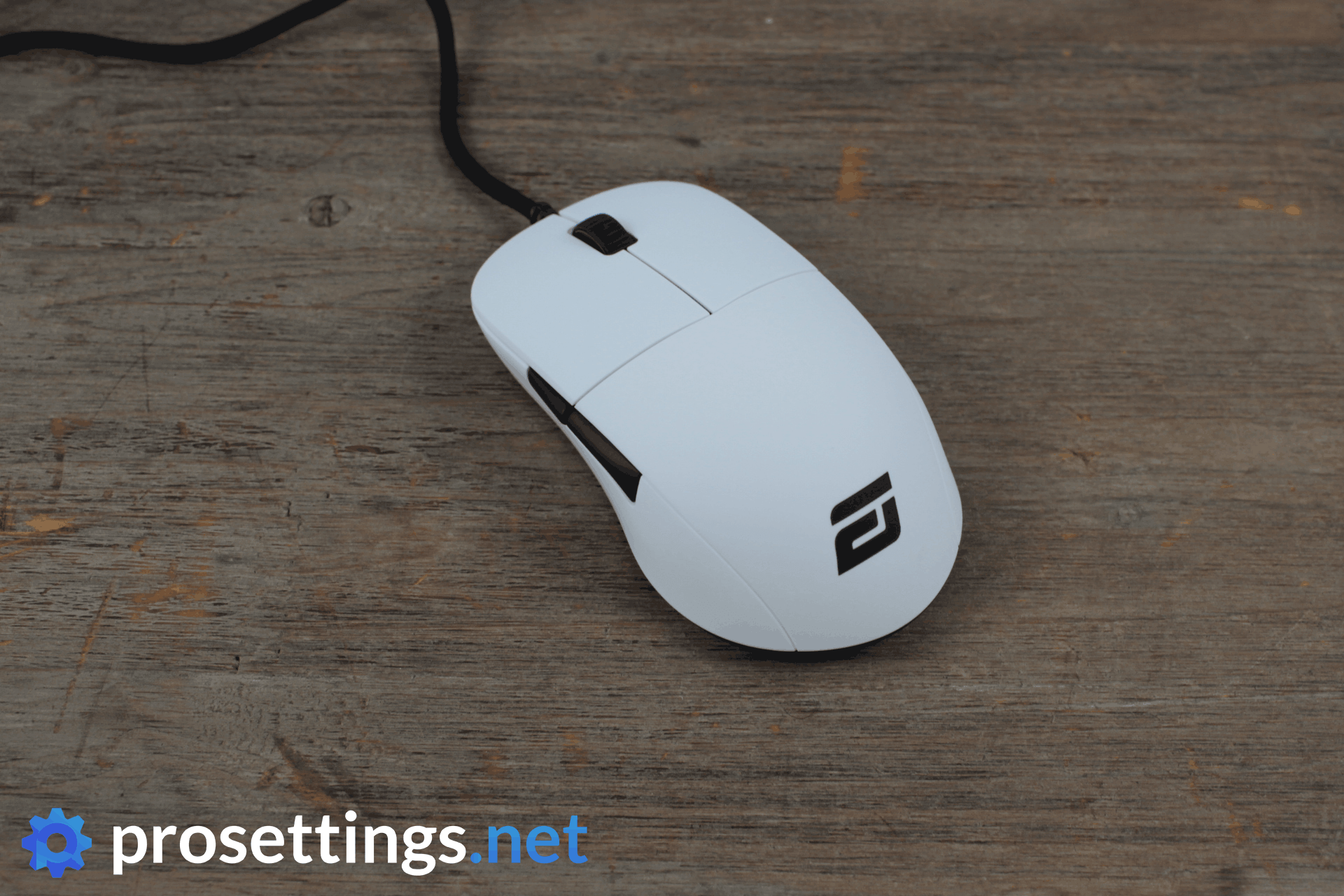
The XM1 is a medium sized mouse with an ambidextrous shape. Fully focusing on competitive gamers, it comes in a 69 grams and features absolutely no RGB lighting except for some indicator LEDs on the bottom of the mouse. Definitely the most noteworthy change between this and the older version is that the cable has now been changed; gone is the ‘okay but not quite up to standards’ rubber cable and in comes an extremely flexible paracord-like cable.
A more subtle change has been made to the coating as well, but more on all of that later on in the review.
Packaging
The XM1 is very much a performance-oriented product, so there’s not a lot of unboxing extravaganza here. That’s obviously okay: including stickers and all of that is cool, but they don’t help you frag out so why would they be included?
What would have been cool to find in the box would be a pair of replacement mouse feet. For mice aimed at competitive gamers (who tend to be more sensitive about things such as glide and so on) it’s an appreciated extra touch, though I obviously won’t be docking any points because of this omission.
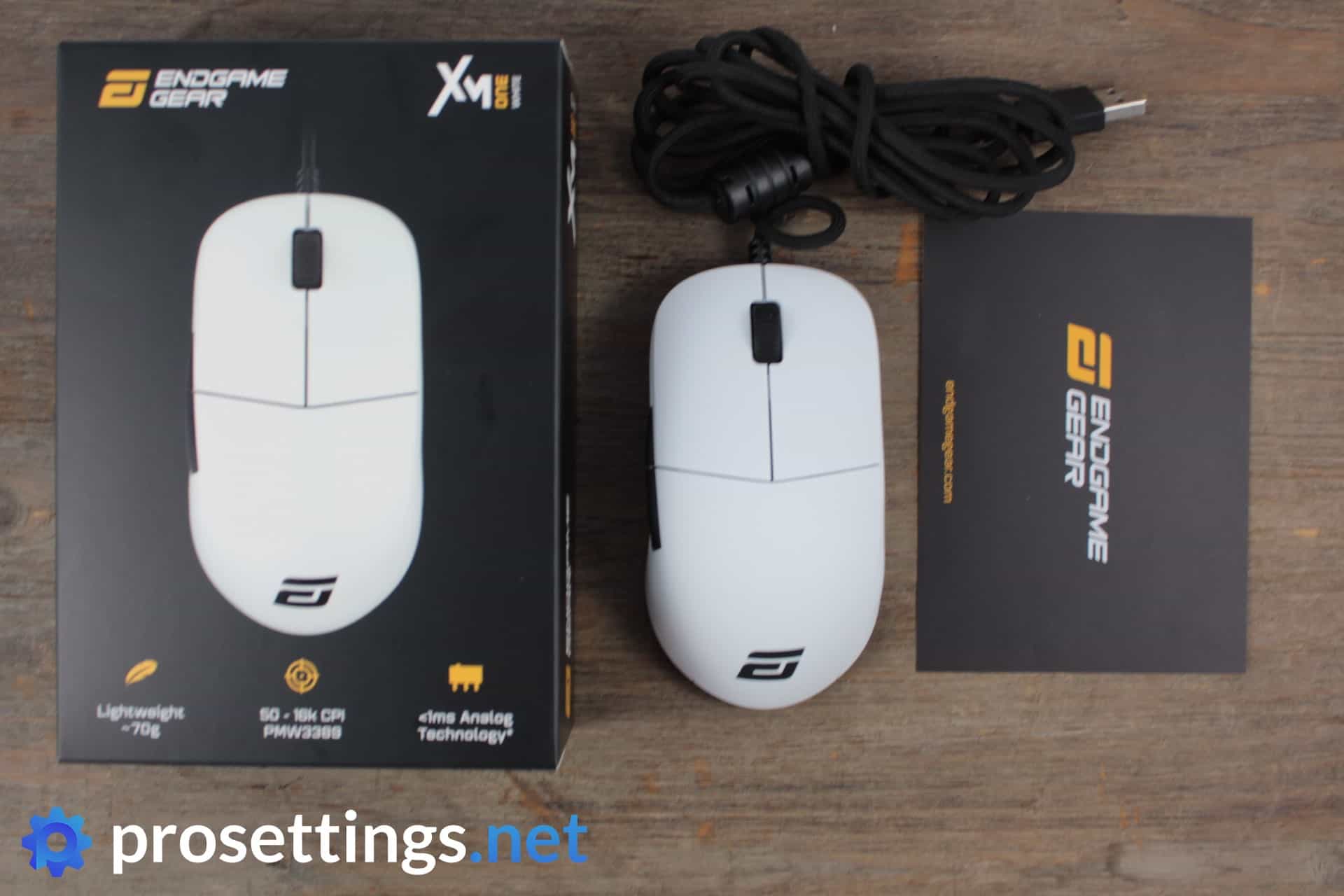
Shape, Coating, and Mouse Feet
No changes have been made to the shape between this version and the first iteration of the XM1, so what I said for that one still goes for the v2.
This is an ambidextrous mouse that widens pretty noticeably at the back, which gives it a curvier shape than you would initially think if you’ve only seen it in photographs. It doesn’t flare out in an awkward way though; it’s all smooth and natural feeling, but as you can see from the spec sheet above there is a rather substantial width difference between the back and the middle of the mouse, so be warned if you don’t like that kind of design.
The coating, then, has seen some (minor) changes. I had some complaints about this with the v1 of the XM1, mainly because it picked up skin oils and fingerprints too quickly for my liking. That’s now been rectified (though it’s way harder to see fingerprints on a white mouse, to be fair) with the coating going more towards that slightly rubberized/powdery kind of feeling. I can’t say that I had any performance issues with the coating that the v1 offered, but I do feel that this new coating is ever so slightly grippier, so as far as I’m concerned this is an upgrade on all fronts.
The PTFE feet on the bottom of the mouse are made out of the same material as before but are now slightly thicker. This’ll help with durability but it didn’t impact the gliding experience all too much for me; you still get a very smooth and consistent glide out of these four skates.
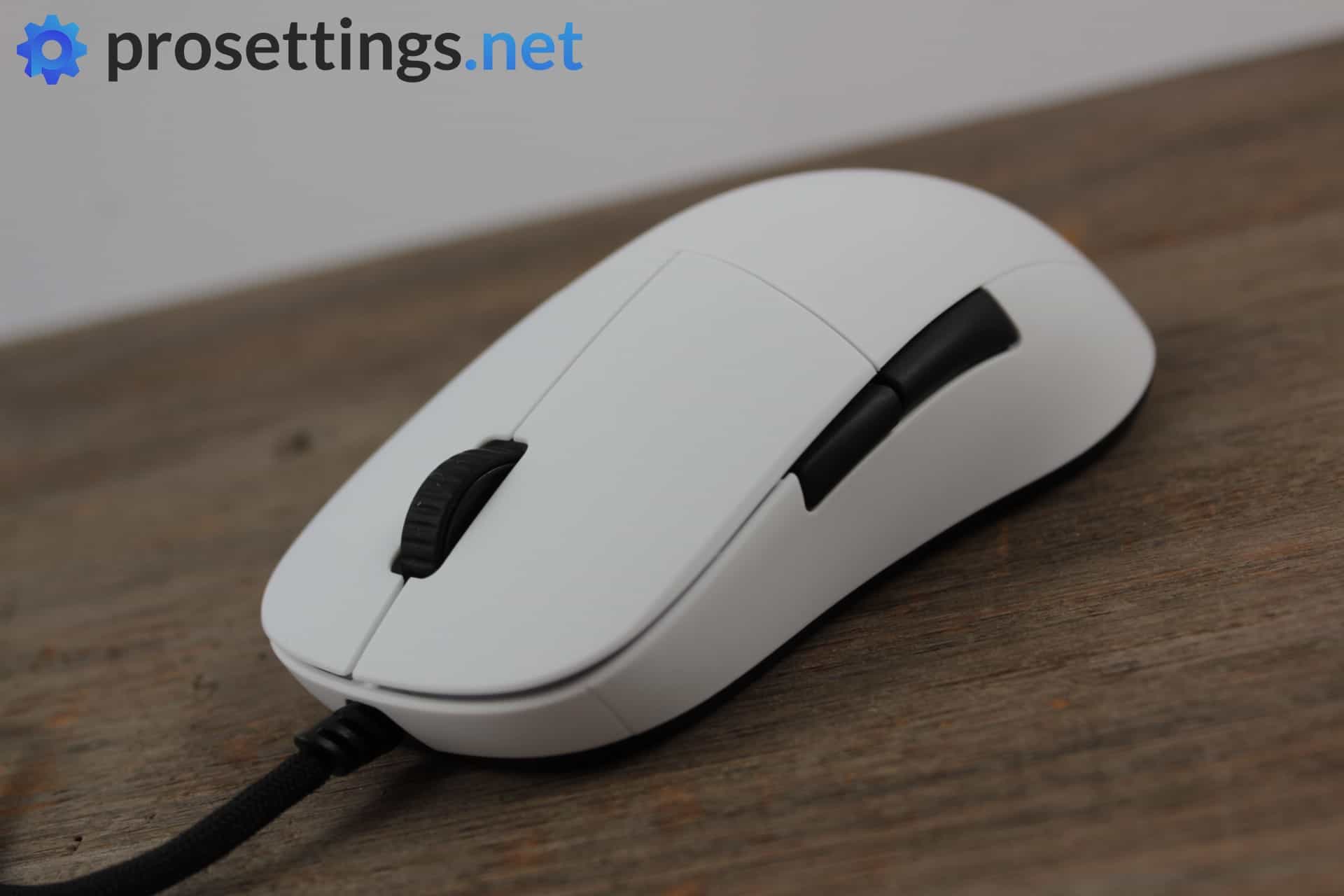
Recommended Grip Types
Thanks to the medium size and rather safe ambidextrous design of the XM1 it will be suitable for a large variety of grip types, provided you’re not turned off by a mouse that’s substantially wider at the back than the middle.
It’s, in my eyes, ideal for fingertip and claw grippers, but palm people with smaller hands might just be able to get away with this one too, depending on how much of a ‘palm filling feeling’ you like.
As always, though, this part is influenced by personal preferences the most, so please do use this section as a guideline only. No one can know what your personal preferences are, so please do not get pinned on these rough guidelines that I’ve put forth here.
Buttons and Scroll Wheel
The main buttons on the XM1 were already pretty darn great to begin with, so it’s understandable that the people at Endgame Gear didn’t feel the need to tinker with these. You still get the pre-sorted Omron switches underneath the hood, and the mouse uses a ‘patented analogue switch contact algorithm’ to achieve a response time of less than 1 millisecond, according to Endgame Gear.
A reasonable question to ask at this point would be ‘do you notice this ingame’ and the answer to that would be ‘no’. At least I don’t, and I doubt that a lot of other gamers will either since modern (good) gaming mice are already so responsive that it’s nearly impossible to tell the difference without any kind of lab equipment. That said, these switches are as durable as regular ones and the clicks don’t suffer either; both main buttons provide a satisfying and crispy click with nearly no travel so I’m not against these analogue-mechanical hybrid switches at all since they don’t stand in the way of the performance and feel of the product.
An issue that I had with the v1 of this mouse is that the side buttons (particularly the bottom button) didn’t feel very good at all so I’m happy to see that this has been rectified. The bottom button now feels every bit as satisfying to click as the top one, and the post travel and wobble issues are almost completely gone. Both buttons actuate with a nice and confident clicking sound and feel great to use.
The scroll wheel remains unchanged but that’s okay. It’s perhaps a bit too small for my liking but the textured rubber wheel strikes a nice balance between rigidity and smoothness so it’ll work perfectly for the vast majority of users, including myself.

Build Quality and Cable
The XM1 truly is an example of Deutsche gründlichkeit. You can squeeze, tap, and shake this mouse for as long as you like; it won’t make any sound whatsoever. That’s amazing, especially since a lot of (newer) companies struggle with that balance between solid build quality and a lightweight product. The XM1 is an utterly fantastic example of how that balance should be struck.
And then we arrive at the most awaited new feature on this mouse: the cable. Endgame Gear have added what they call a Flexcord, and boy does it put the ‘flex’ in ‘flexcord’. This is probably the most flexible stock cable I’ve seen on a mouse so far, so much so that I sometimes accidentally landed my mouse on a bit of leftover cable during an intense CS:GO deathmatch session. I do play at a relatively low sensitivity, and once I straightened out the cable (or put it in a bungee) the issue went away so I’m not saying this as a negative, it’s more of an amusing observation about the flexibility of this cable.
Nevertheless, this Flexcord absolutely delivers, and if you’re looking for the most flexible stock cable on the market at this point in time you shouldn’t look any further.
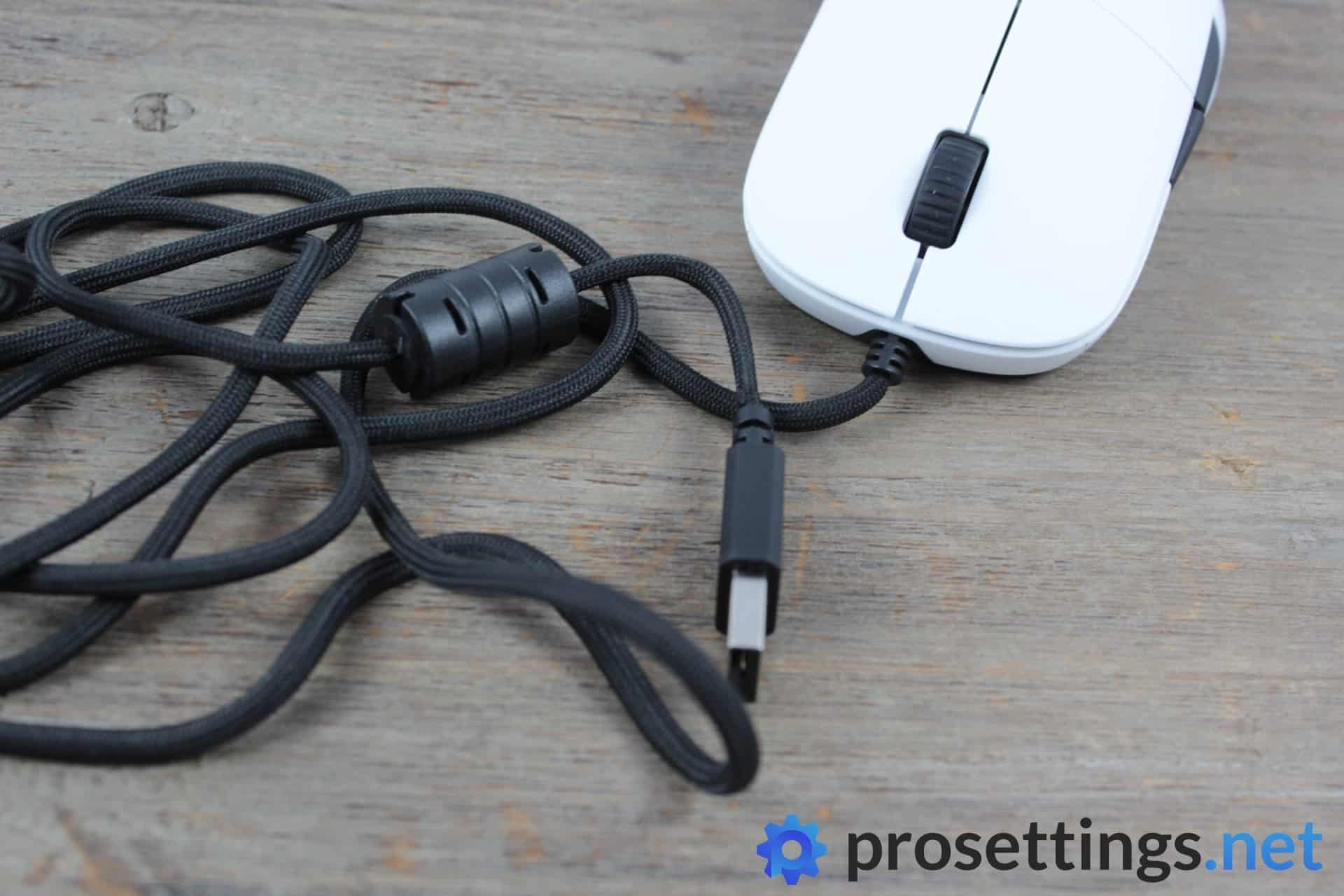
Sensor and Everyday Performance
The insides of the XM1 haven’t changed with this v2. The brain of this rodent is still the 3389 sensor, which provides flawless tracking and performance without any smoothing, acceleration, or anything annoying like that. As with every mouse that I test I went ingame and opened up some programs to test this, and as expected it performs exactly as advertised. I’ve said this before in other reviews, but the days of reputable gaming mice having dodgy sensors are well and truly over so it’s great that companies are now able to focus on innovating in other areas.
The XM1 works straight out of the box without the need to ever install any software, but there is the option to do so if you (for example) play with an unconventional DPI setting. By default the mouse comes with the usual presets of 400, 800, 1600, and 3200, so in theory it’s not even necessary to install the software but it is recommended to do so to upgrade your mouse to the 2.0 version of the firmware. After that you can use the software to disable the side buttons and middle click, and you can change the LOD by one millimeter but that’s about it, so after updating the firmware there’s not a lot of reasons to keep it around.
A mouse such as this one doesn’t really need software, however. It does what it has to do (which is ‘perform flawlessly as a competitive gaming mouse with no frills’) and that’s where it ends. That’s absolutely fine with me, but massive macro management fans will probably want to take note, and if you’re an RGB fanatic you will probably want to think twice too.
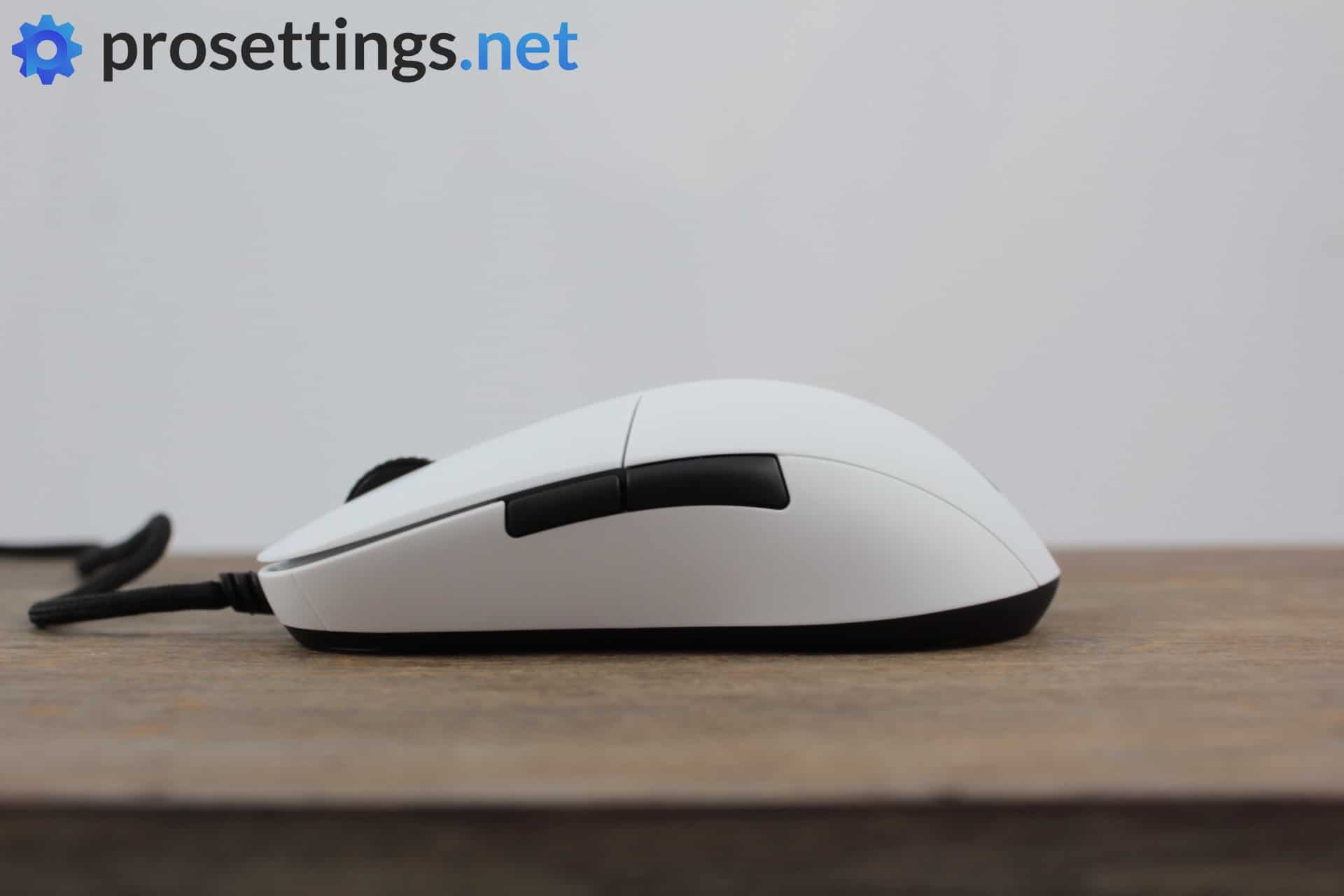
Conclusion
The XM1 v1 was, as I called it, ‘a really promising first attempt’ with a lot of potential. That potential has now been fully realized with the v2, so it’s a logical Staff’s Choice award winner.
This is a solidly constructed lightweight mouse that offers great clicks all over, a more than decent scroll wheel, great feet, and just about the most flexible stock cable that I’ve seen on a mouse so far. Pretty much everything that I had a problem with on the earlier version has been (drastically) improved, and it’s encouraging to see that the people at Endgame Gear have done it on such short notice too.
Should you absolutely get this one if you already have the v1? It depends. If the cable bothers you then this is a logical upgrade, and the same goes (to a lesser extent, since these aren’t as big of a deal on the v1) for the side buttons and coating. If you’re looking to buy your first Endgame Gear mouse I’d wholeheartedly recommend the v2 though, it’s a banger.
This product was received for free from the manufacturer and given to our reviewer to test and review. Brands and manufacturers have no editorial control over our reviews. For more information, check out our review FAQ.


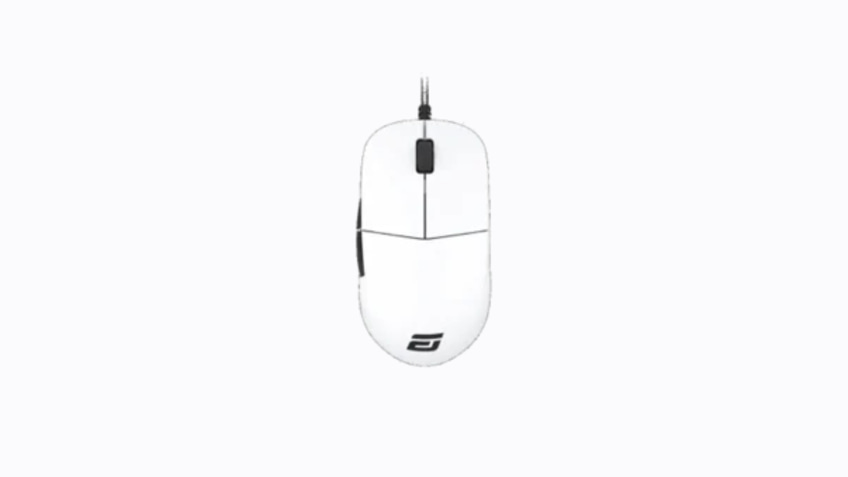





Hi, I am looking in the market for a new mouse and I was hoping you could help me find the right mouse for me? My hands are 18×9.5/10 and my grip style is claw grip/fingertip hybrid my main mouse atm is zowie s2 I love it toke me a long time to find the right mouse I was thinking of getting np1 but the shipping price to my country is too expensive like 100 just not worth that I like smaller mice I find that aim best with them I tried logitech g pro wireless didn’t like it nore the razer viper it was jittery for me the mouses got in mind are endgame gear xm1 model O- xtrfy m4 xtrfy m42 xtrfy mz1 steelseries aerox 3
If you like smaller mice the XM1 might not be for you since it’s pretty ‘broad feeling’ so to say. Out of those, if you love the S2, I think your best bet would be the Xtrfy M42 at this point in time. Its shape really reminds me of the S2 but it of course has more ‘modern features’. The Model O is quite a bit flatter than the S or M42, so if you like that slightly higher profile that those mice offer then I wouldn’t go for the Model O. The M4 is not an ambidextrous mouse and it has an ergo shape that might take some time to get used to (if you get used to it: some people hate the curve at the back and can never get used to it) so that’s not necessarily what I’d recommend either, unless you’re looking for that kind of thing. I don’t have any hands on experience with the Aerox 3 but I’ve heard mixed stuff about the quality of that mouse so take take for what you will.
All in all I’d say, out of those mice, and based on what you told me, the Xtrfy M42 would be your best bet. But of course this is just a recommendation: don’t take anything that I say (or any other reviewer who doesn’t know you and your preferences really well) as something that’ll be 100% true. Hopefully this helps, but let me know if you have any other questions!
If NP-01 and XM1 are chosen, which one is better?
Difficult one, because I’ve used both for a while (after my review period I mean). I feel like the shape of the NP-01 is better, but that’s highly subjective. The cable and coating of the XM1 is without a doubt better, while the clicks are about on par. There’s of course the fact that the XM1 is lighter, too.
This doesn’t help much, I know, but it comes down to a couple of (subjective) factors. If I had to choose I’d go for the NP-01 because I like the shape better (the XM1 is too wide for me at the back) but that’s just me of course. An ideal mouse between those two would be a slightly lighter NP-01 shape along with the XM1 coating, cable, and the NP-01’s thicker feet. If you’re asking me, that is.
why is this mouse not used a lot by cs professionals? is it worse than the zowie mouse? are the sensor or shape worse?
CS:GO pros don’t change their gear all that often. It changes from scene to scene (Fortnite players, for example, switch around the most of our analyzed games) but in general if you’re using something that works for you it’s not worth it to change. These professionals play at levels where a 1% drop in performance can mean the difference between advancing in a tournament and dropping out, and it does take a bit to adjust to a new mouse so most probably feel like it’s not necessary to switch too often.
That said: the sensors are pretty much equal in performance, and shape is subjective, though Zowie is definitely known for their great shapes.
Hi I have 18×8.5 cm hands, Im using mainly claw – clawpalm, playing mainly FPS Games. Do you have any mice you would recommend? 🙂 Thank you in advance!
Aside from the XM1 (which is one of the best claw mice out there at the moment if you ask me) you could also take a look at the VAXEE Zygen NP-01 or the Zowie S line. There are also the usual suspects such as the G Pro Wireless of course, but that one has a more neutral shape. To tell you the truth I could recommend a whole lot of mice based on this info, so do feel free to let me know what you think of my suggestions so I can narrow it down for you or give you some new ones if necessary!
Hello, i wanted to ask u review so many mouses what is your main ? and what is your hand size in cm me 18-10 i played deathadder 3.5 then rival 300 then ec2-b idk i hated the slides i go gack to rival , it sometimes spinout iam thinking maybe try amidextrous mouse, because at work i use small mouses like dell ms116t and logitech b100 so i want something different to them maybe u can advice something?
p.s sorry for my bad english
great regards, Karolis 🙂
Hi,
I switch a lot (it can happen that I review a couple of smaller ergo mice over a short period of time and I start preferring those kinds of shapes, for example) but I found myself always going back to the Logitech G Pro Wireless, modded with Corepad feet. I like the shape and love the coating, clicks (they’re not double clicking, luckily), and wireless aspect.
Lately I’ve been trending towards the VAXEE ZYGEN NP-01 (which I paracorded) though: the shape reminds me of the GPW but with that little ergo flair (I sometimes wish there’d be a little curve in the left side of the GPW for my thumb, which is something that the NP-01 has) and I absolutely love the clicks.
In my ideal world right now I’d have a wireless NP-01 that’s a slight bit larger with the coating of a GPW (though the button coating of the NP-01 can stay) and thicker feet but of course finding the absolute perfect mouse is extremely difficult, doubly so if you’re testing so many. Bear in mind that it’s possible that my opinion has changed if you ask me this in a couple of months since so much great stuff is coming out nowadays.
My hand size is 18×10.5 cm (give or take a couple of mm) and I prefer mice with a more pronounced hump towards the back. Ergonomic or ambidextrous doesn’t really matter to me but I’m not a big fan of very formed ergo mice.
To answer your question: I take it you disliked the DeathAdder then since you haven’t returned to it so large ergo shapes is maybe something to stay away from. If you like small ambidextrous mice you can give the Razer Viper Mini a spin, or something like the Glorious Model O-, Logitech G203 (or G305 if you like wireless). Let me know if you have any questions about any of them!
No worries about your English by the way, it’s more than fine!